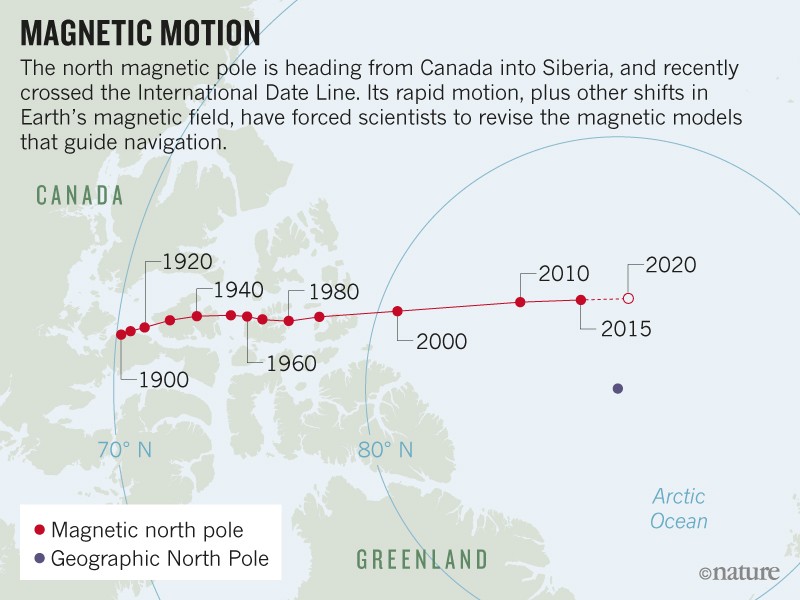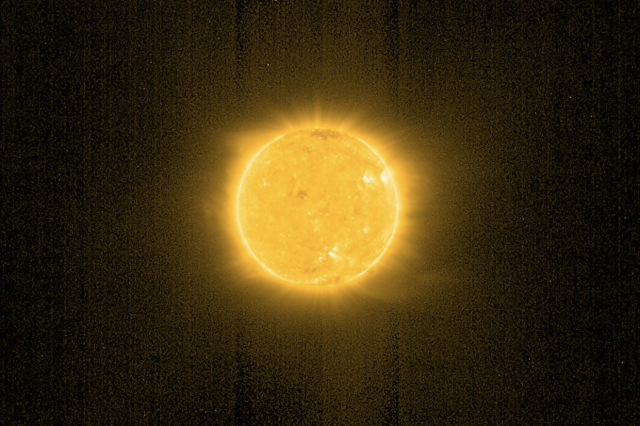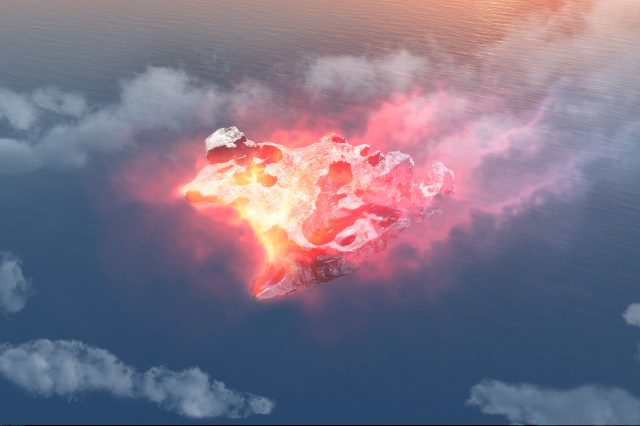Erratic motion of north magnetic pole forces experts to update model that aids global navigation.
A Change in Earth’s Magnetic Field
The release of the World Magnetic Model has been postponed to January 30, 2019, due to the ongoing US government shutdown. Earth’s north magnetic pole has been rapidly shifting from Canada towards Siberia, driven by liquid iron sloshing within the planet’s core. This quick movement has compelled the world’s geomagnetism experts to make a rare update to the model, which underpins all modern navigation systems.
The Need for an Update: Earth’s Magnetic Field in Flux
The most recent version of the World Magnetic Model, released in 2015, was expected to be accurate until 2020. However, the magnetic field is changing so quickly that researchers have had to make adjustments now. Arnaud Chulliat, a geomagnetist at the University of Colorado Boulder and NOAA’s National Centers for Environmental Information, explains that the error is constantly increasing.
The Core of the Problem: Pole Movement and Deep Shifts
The issue arises from the moving pole and other shifts deep within the Earth. Most of the magnetic field is generated by liquid churning in Earth’s core, which changes over time as the deep flows shift. In 2016, for example, part of the magnetic field temporarily accelerated deep beneath northern South America and the eastern Pacific Ocean. Satellites such as the European Space Agency’s Swarm mission tracked this shift.
Source: World Data Center for Geomagnetism/Kyoto Univ.
The World Magnetic Model’s Issues: Exceeding Acceptable Limits
By early 2018, researchers from NOAA and the British Geological Survey realized that the model was so inaccurate that it was about to surpass the acceptable limit for navigational errors. This was due to the 2016 geomagnetic pulse beneath South America occurring just after the 2015 update, and the unpredictable motion of the north magnetic pole.
The North Magnetic Pole’s Journey: From Canada to Siberia
The north magnetic pole’s movement began accelerating in the mid-1990s, from approximately 15 kilometers per year to around 55 kilometers per year. In 2001, it entered the Arctic Ocean, and in 2018, it crossed the International Date Line into the Eastern Hemisphere, heading straight for Siberia. The model’s errors are magnified in areas where the magnetic field is changing quickly, such as the North Pole.
Updating the World Magnetic Model: Incorporating Recent Data
To correct the World Magnetic Model, Chulliat and his colleagues input three years of recent data, including the 2016 geomagnetic pulse. The updated version should remain accurate until the next scheduled update in 2020.
Understanding the Magnetic Field’s Changes: Ongoing Research
Scientists are working to comprehend the reasons behind the dramatic changes in the magnetic field. Geomagnetic pulses, like the 2016 event, might be traced back to hydromagnetic waves arising deep in the core. The rapid movement of the north magnetic pole could be linked to a high-speed jet of liquid iron beneath Canada. According to Phil Livermore, a geomagnetist at the University of Leeds, the magnetic field beneath Canada is being weakened and smeared out, causing Canada to lose a magnetic tug-of-war with Siberia.
PLEASE READ: Have something to add? Visit Curiosmos on Facebook. Join the discussion in our mobile Telegram group. Also, follow us on Google News. Interesting in history, mysteries, and more? Visit Ancient Library’s Telegram group and become part of an exclusive group.






